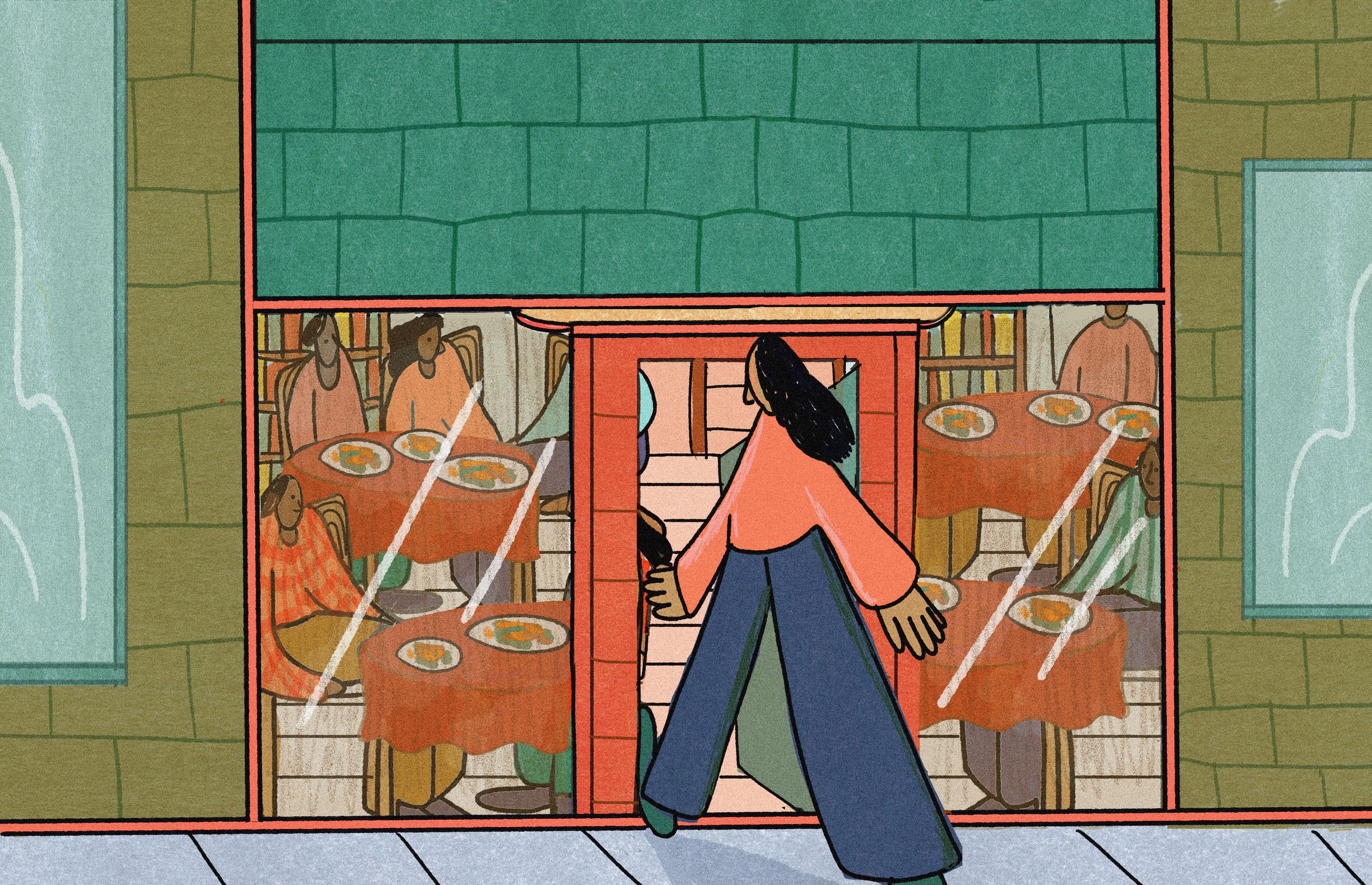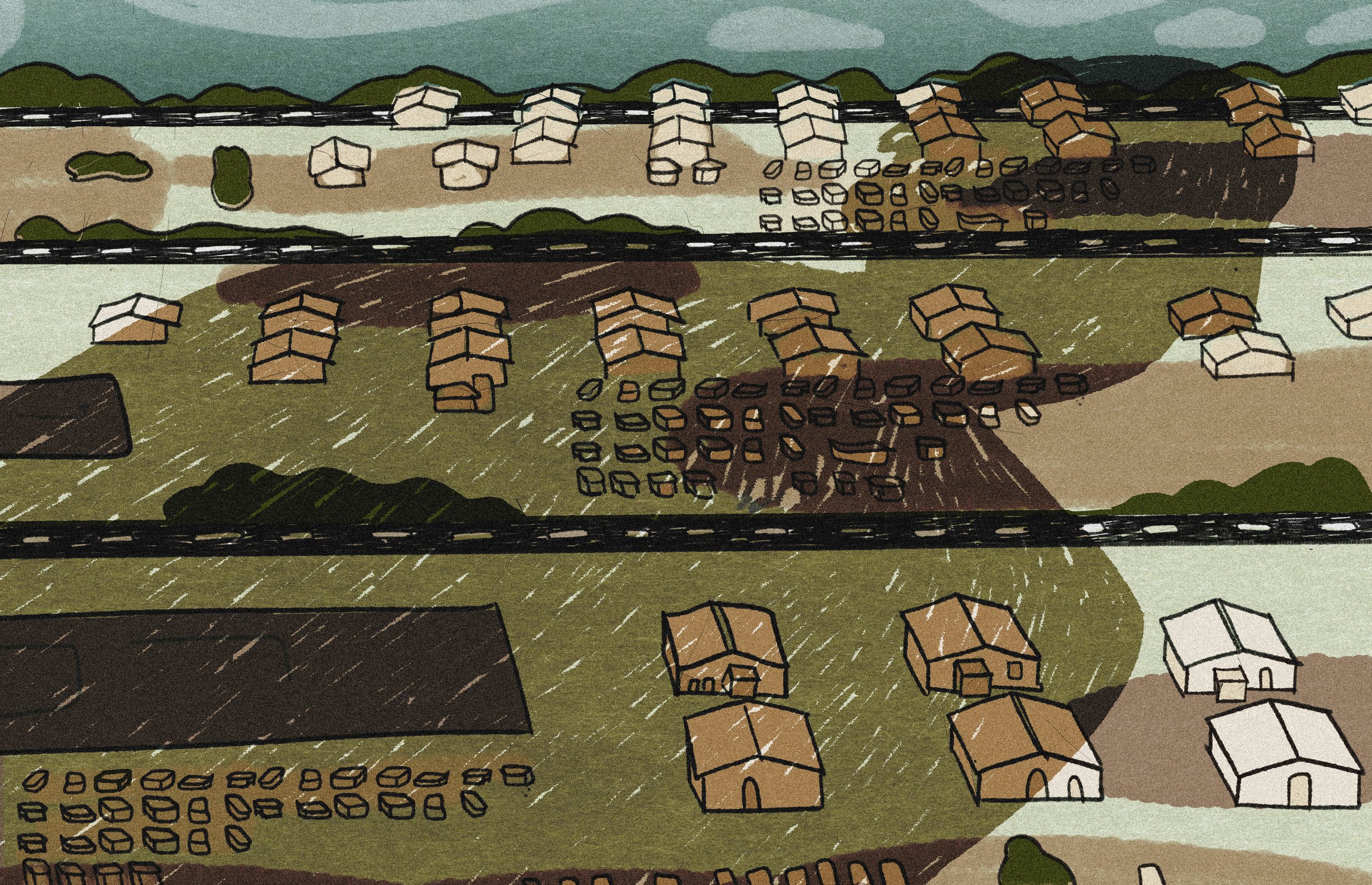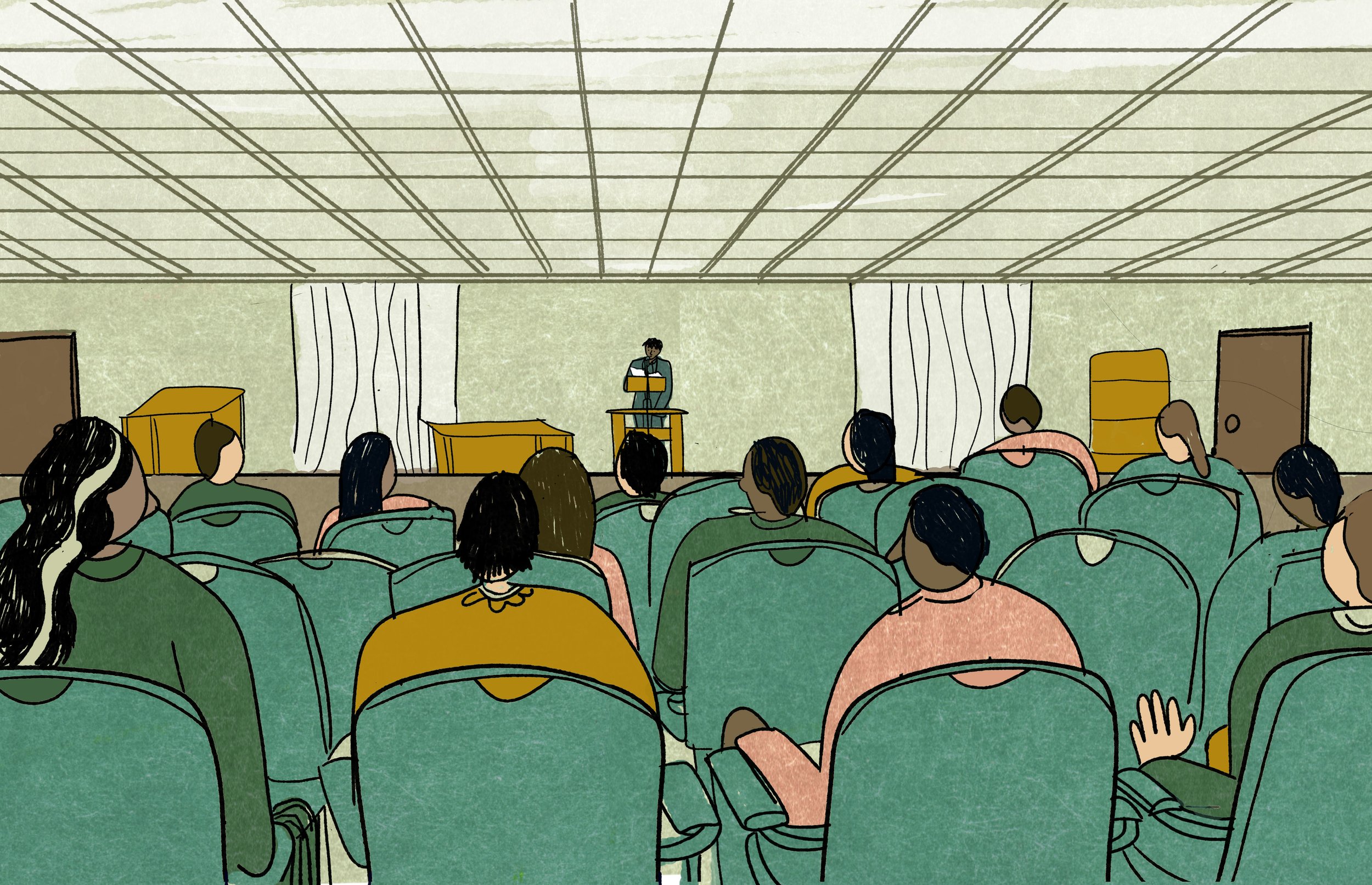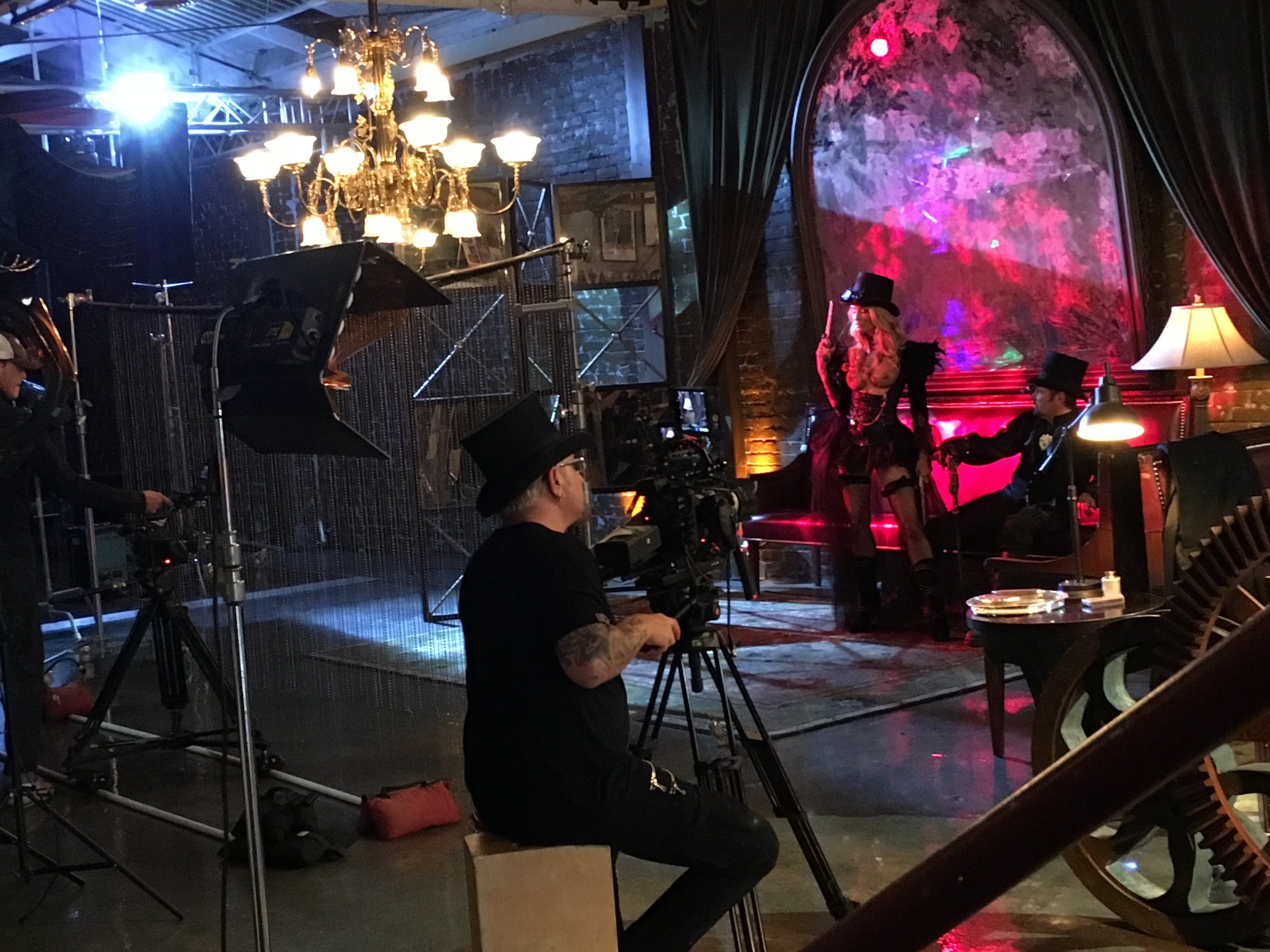Radioactive Memory: What I Didn't Say About Fukushima
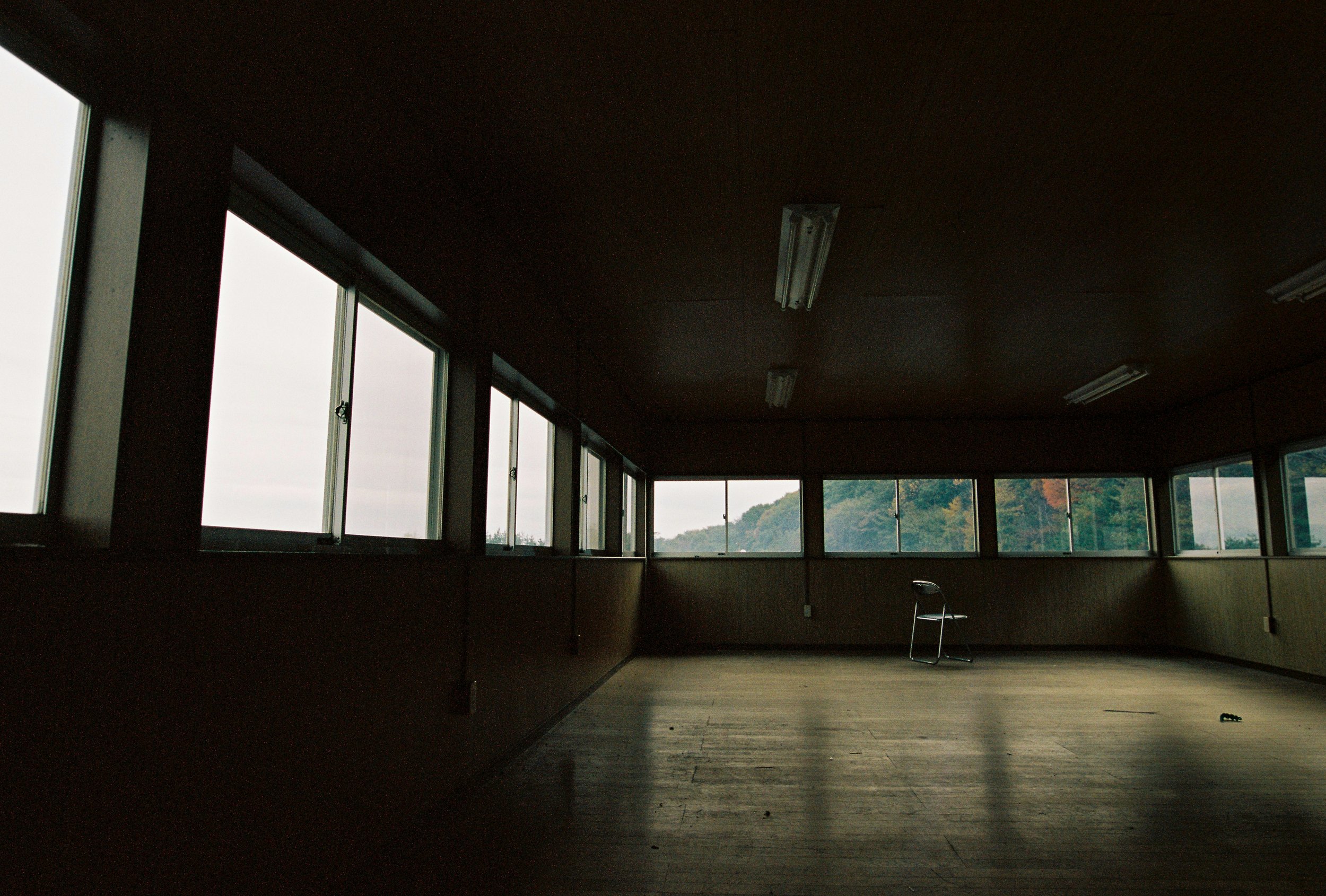
In 2017, I visited Fukushima on a travel grant from Columbia University’s MFA program to research why, six years after a 9.0 magnitude earthquake and tsunami ravaged the eastern coast of Japan, 35,000 individuals continued to live in temporary housing. The small, prefabricated houses spread across the greater Fukushima Prefecture were quickly deteriorating. Tens of thousands of Japanese were in limbo, news sources insisted. Even after half a dozen years, contamination levels in evacuated nuclear zones remained unsafe, and no one was certain how much longer the displaced would have to wait before they could return home.
75,000 of those originally displaced within Fukushima had already left temporary housing, some returning home once their zone was deemed safe but most relocating to other places across the country. I wondered if those who stayed in the settlements lacked the financial means or assistance to move on—maybe their livelihoods and savings were eradicated by the disaster. I couldn’t imagine why else they would have stayed this long. Curiously, in the interviews I read, I learned that for all their grief, there was a contingent of the displaced who were making no demands. Not for funds to move elsewhere, not for new jobs, not for more expedient excavation of the land. It seemed they simply waited to return to an area devastated by nuclear meltdown, and I wanted to understand why.
“I wondered if those who stayed in the settlements lacked the financial means or assistance to move on—maybe their livelihoods and savings were eradicated by the disaster. I couldn’t imagine why else they would have stayed this long.”
Years prior to the trip, I watched a clip of University of the Ryukyus professor Joji Otaki studying the PaleGrass Blue butterfly, specifically chosen for its ubiquity across Japan and rapid expression of environmental conditions. He and his team examined specimens from Fukushima and compared them with those from other cities across the country unaffected by radiation. Their research found that, while the butterflies in other cities reflected a normal proportion of abnormalities, immediate exposure to radiation had altered the reproductive cells of the Fukushima parent generation, which transmitted their abnormalities to subsequent generations. Mortality rates rose; their dusty blue wings faded and crumpled like a used map; their antennae lost their symmetry; inky spots along the wings’ outer edges disappeared and reemerged like phantoms closer to the body; their eyes shriveled.
When I read about the tens of thousands of individuals who waited to return to these same irradiated zones that had doomed the Fukushima Pale Grass Blue butterfly, I wondered: Could Otaki’s findings about the butterflies relate to the human condition? Had he and his team exposed the possibility of human mutation to an indifferent government and people? How did the residents who remained in temporary housing consider the risks of radiation in their decisions to leave or stay, if they had a choice?
I set out for Fukushima.
*
The first moments of my trip started slowly. For three hours, the train ride from Tokyo to Fukushima telescoped into denser and denser quiet. The few people on board did not speak to one another. Not the masked elderly, nor the boys in tracksuits, nor the girls slouching in navy blazers and pleated skirts, nor the woman carrying a loose cabbage. I realized I hadn’t talked to anyone in a couple of days.
At Kusano station, the boys mounted their bikes and set off for home against a deepening pink sky and pale yellow fields. Standing on the platform, I watched the train take off again. When I asked for a taxi, the agent at the single-room station pointed to a lone cab running out front. From the front seat, the driver skeptically asked for my name again and again as he phoned his company. Someone else must have reserved the cab, but I already felt like I couldn’t spend another moment alone in this sparse landscape. I was thinking about the possible dangers Fukushima would confer on my body. Being around other people anchored my reality: If they continued to live here, it couldn’t be so bad.
The March cold felt unnatural. The ground looked hard, like spring would never come. There was no heat where I stayed, a 300-year-old shack with a corrugated tin roof. A hand-painted sign on the front yard designated it “Gamp House.” The man who’d listed the room online was unexpectedly called away on business and, without him, I couldn’t communicate with his parents. I skulked around their home as they tended to their own plans. The mother, energetic with short purplish red hair, was a housekeeper who came and went throughout the day. The father appeared to be retired. He and a small crew, maybe neighbors, were renovating their bathroom, which admitted even more cold air into the paper house. They seemed disinterested in me. Perhaps hosting was their son’s enterprise or, just as likely, they were skeptical of what good could possibly come of someone from far away writing about their prefecture or about them. In one of those moments when I was alone, I searched the word “gamp.” Its only use appeared in a Dickens novel meaning "umbrella." Looking up from the tatami, sure enough, the corrugated roof, conical with spokes all around, resembled the undergird of a parasol.
That first night, I lingered in the foyer, tired from traveling. I didn’t realize how remote the house would be, and I hoped the mother would offer me a ride into town. But when I tried communicating what I wanted, she only smiled and pointed in the direction of town.
“I would begin to wonder why I didn’t worry instead about the radiation that must be emanating from the ground immediately beneath me, since the site of the Daiichi meltdown was only 35 miles away.”
Bitterly, I walked along the shoulder toward the horizon, back the way the taxi had driven me. There was nothing but flat, colorless fields, and a quiet so complete that I questioned my ability to hear. I flickered between feeling fearful and foolish for worrying. The nuclear plant only comprised a dot within this prefecture. But what did it matter how vast Fukushima was, when all I could think about were the crumpled wings of the Pale Grass Blue butterfly?
Before long, I came upon a restaurant that seemed to extend from my imagination. Suddenly, there were people talking like actors on set. There were sounds of dinnerware and busyness in the kitchen. I didn’t understand what anyone was saying, but I relished the sight of them. When my food came, I went back and forth about what I should do. I studied the noodles for a long time. In my happiness and growing hunger, I forgot about my fears of radiation. Before I left New York, news sources reported that Fukushima had just recorded the highest levels of radiation since the meltdown. I interviewed a professor in molecular biology at Columbia who described ionizing radiation as an intense form of energy that could cause double-stranded breaks in DNA. Without a template, bases could incorrectly pair during replication and effect mutations.
I ate a little. I would only be here for four days. It seemed irrational to suddenly home in on the dangers of food when radiation—energy that traveled through space at the speed of light—could be emitting from anything around me. But eating felt more intimate. I set the bowl aside. I stayed a little while longer just to be around the cadences of other people’s speech, which were calm and joyful, and most significantly, external to my own flickering thoughts. Then I walked the quiet roads back to Gamp House.
That first night under the corrugated roof in Fukushima, I lay awake with my head near a small kerosene heater, still cold even under the heavy blankets that the mother laid out for me. My fingers swelled, trying to circulate blood. Through the paper walls, I listened to the strangely intimate sounds of the mother and father breathing in sleep. I tried not to worry about the kerosene fumes. I knew that if I did, I would begin to wonder why I didn’t worry instead about the radiation that must be emanating from the ground immediately beneath me, since the site of the Daiichi meltdown was only 35 miles away. I tried to conceptualize the number. Was 35 miles far away or close by? I imagined the track around the AstroTurf at my high school. 35 times four of those oval loops stretched out one after the other.
One afternoon, I Skyped Otaki himself. He looked young, in his mid-thirties. He had a soft, metered way of speaking I found reassuring. Prognoses for equally affected Fukushima Pale Grass Blue butterflies, he explained, differed radically depending on their diet. The Fukushima butterflies that ate radioactively contaminated leaves continued to deteriorate, while, quite shockingly, those that ate diets of uncontaminated leaves eventually showed signs of recuperation, though not before extreme bottlenecking of the population. His findings made me feel hopeful that living things possessed an intrinsic resilience, that the unfathomable devastation of 3/11 might not have to cause even more suffering than it already had. Still, we simply do not know, Otaki said, what all this can mean for humans. There was the truth, I thought. With so much unknown, the displaced should not return home.
*
Early on the anniversary of 3/11, I walked to the train station. That wide road again, a lone car rushing past, the occasional bird. On the platform, a few lanky school girls were giggling despite the morning hour. The mother had heard from a friend that the city center in Iwaki, two stops away, was hosting a 3/11 memorial service. Perhaps she pitied me now, seeing how clueless I was, more than she had initially distrusted me.
“Now I suspect that I might have suppressed preparing for the trip the way an animal goes limp in the jaws of a predator.”
Iwaki station, large and windowed like a greenhouse, was surprisingly busy. I looked around for the memorial service as though it would announce itself. With no Japanese language skills, I could not speak to anyone to get around, let alone interview them. At the Gamp House, I’d used my phone to communicate, but the idea that I would hold up my phone to strangers hurtling through the turnstiles seemed ridiculous. I was furious with myself. How could I have come all of this way only to be so underprepared? It was unlike me. Now I suspect that I might have suppressed preparing for the trip the way an animal goes limp in the jaws of a predator. The less I knew, the less I could resist the trip. The less rigid I could be.
A white man, slight, in his late 20s, sat on one of the benches looking at his phone. I asked if he spoke English. He seemed ready for my question.
“I'm looking for the memorial service,” I said.
"I'm headed someplace similar.” Ben was an Australian working for Iwaki’s international relations office. His dance team was performing jangara, a local traditional dance honoring the dead, at the beach, and he called them asking if I could come.
At the small store on the platform, we skimmed newspaper articles looking for mention of Shinzo Abe and what his administration might have said about the anniversary, but we only found photos of candlelight vigils in local papers. Later, we learned this was the first year the government did not acknowledge the disaster. It felt uncanny that an event as cataclysmic as 3/11, whose fallout still produced 400 metric tons of radioactive wastewater every day, might be treated as part of the distant past by those in Tokyo.
The day was very bright and cold. At the beach, the men wore thin, sleeveless robes, dark blue with white waves curling up along the bottom edges and white bands tied around their heads and arms. For over an hour, they beat large drums and chanted the same words over and over to lull mourners into a state where they could openly grieve. Asay, asay, asay, asay. As they performed, I walked to a nearby grave. Families refreshed the flowers in vases set on granite planes that seemed to hold all the coldness of the day.
During a break, the dancers put on their jackets and blew into their hands. One of the dancers who owned an onsen told me that he would talk to me so long as I portrayed Fukushima positively. All that was ever discussed about their prefecture was the radiation, he said. He didn't comment on his business, and I didn’t press. Maybe it was shameful to say it was doing badly. Later, when I visited, there was no one at the onsen even on the ideally cold day.
When they began dancing again, I walked along the shoreline. Vendors at the foot of the rock wall sold dried seafood. I wondered how much they would sell that day. I bought two delicate coasters woven in straw and lined with cowry shells, then I climbed to the top of a lighthouse. Asay, asay, asay, asay ascended and found me. The water was blue. The sand white. The waves around the shore reminded me of creases in a forehead before the surface eventually eased into an endless placid expanse. It was hard to imagine this was the site of such devastation.
When they finished, I asked Ben if we could visit the temporary housing settlement we passed on the way to the beach. It was across a gas station, off a main road, a couple blocks from the train station. “I never noticed it before,” he said.
I could understand how Ben could have missed it, since it didn't stand out at all. The settlement looked like a parking lot, except instead of cars, there were long blocks of grey-blue trailers. I thought the settlement would be situated in a remote location so as not to disrupt locals, but it was in a prime neighborhood in walking distance of the train and downtown shops.
The settlement was quiet. We approached a few older residents, a woman and her friends—a couple walking their Pomeranians. They repeated what the onsen owner asked, what everyone I approached would eventually repeat: They would speak to me only if I represented Fukushima in a positive light. The woman readily acknowledged that the government had offered her the opportunity to relocate to another part of Japan. Most of her former neighbors in the settlement, especially those with families, had already moved to new cities once they were able. The trailers, while neat and centrally located, became too cramped for their children. But she continues to hold out. “I just want to tend to my old garden,” she said.
I couldn’t understand why she couldn’t garden elsewhere, why she needed to return to the specific plot she had left. She had already retired by the time of the accident. She wasn’t like others in the settlement who were still paying mortgages on houses or businesses in the irradiated zones. She was completely free to go anywhere she wanted, I thought. Yet she and her group of friends seemed content. They had each other. I wondered if this was not a significant enough reason to stay, so that they could remain neighbors. Before I left, I asked to take their picture. They agreed, but only if I shot them from the neck down.
Later in my trip, I spoke with Dr. Kiyoshi Kurokawa, Professor at the National Graduate Institute for Policy Studies and Science Advisor to the Cabinet of Japan. He was impeccably dressed, but he looked tired, with half-moon impressions under his eyes. He depicted the Fukushima disaster as a microcosm of the government’s larger continuation of a centuries-old closed-door policy that prevented global collaboration. As Kurokawa saw it, Japan was at the intersection of two ages of thought: one that could progress rapidly if it exchanged ideas with the rest of the world and another that avoided ever admitting failure. Many of those displaced, he said, held onto traditional Japanese ideas about keeping land and trades within the family. He posited that the way Americans perceive their relationship with land can be more transient. An individual moves from their parents’ home, to a place of their own, and to a few others, still, in their lifetime. Meanwhile, the Japanese can keep a plot of land for sometimes 500 years within the same family.
Later, his words would echo in my mind. I didn’t have a Fukushima. There was no place for which I would die, no place my family had lived for centuries. My paternal grandmother moved to America in 1970 so she could make more money to send home for her kids than she would have as a nurse in Taiwan. There was no difficult break with the island, only a practical one. Even in Taiwan, my grandmother had moved a number of times: when KMT officials took over her Japanese-style house for their own generals and comrades, when she and her husband moved into their first apartment with too few windows, when finances improved somewhat and they moved into another apartment with a flushing toilet and better air circulation, when he left her and she moved into a room at the parish because she couldn’t rent an apartment as a single mother. In my own 30 years, I have lived in 13 residences. Each of these places promised a sense of discovery and I never looked back. When I think of the places I used to live, they possess the dim quality of dreams. I almost feel relieved to be rid of the weight of them, of who I used to be.
“I didn’t have a Fukushima. There was no place for which I would die, no place my family had lived for centuries.”
For the woman I spoke to, there was no garden but the one she had. After all these years, her calculations, and those of the other displaced who shared her views, seem fairly simple to understand. The woman and her friends were elderly. Perhaps they took risks with their older age in mind. They did not deny the science of radiation but accepted it wholly, even if it predicted a strange and possibly painful fate for the sake of reuniting them with their memories. More difficult to comprehend, then, were my original objections. What bearing did their decisions to return to desolation have on me, or other Japanese, that I should have cared how they wished to live?
It seemed that the rest of the country shared my fears and general anxiety. Fukushima Prefecture, once regarded as Japan’s produce capital, had largely been abandoned. Tourists throughout the country once came to pick fruits from the orchards or dip in the onsens. Following the meltdown, all of that changed. Nobody wanted to travel to Fukushima, much less eat the food raised from its soil. On Sunday, Ben and I visited a sprawling but empty complex on the water selling seafood and dried goods. The mongers stood around long-faced behind ice beds of filets. The fish were labeled with Geiger counter readings that rivaled those from other areas of Japan and Europe. Still there was no one.
*
Even today, people are eager for a singular truth. But such a truth seems impossible between a government that has obfuscated facts and the reality that, as Otaki presents, the dangers are still impossible to fully know. More than a dozen years after the meltdown, debate about how to proceed remains as contested as ever. Concerns about Fukushima’s safety resurfaced when Tokyo Electric Power Company and the Japanese government began releasing 1.3 million tons of radioactive wastewater that had been collecting every day since the disaster. Even though the wastewater is treated and diluted to regulation levels before being discharged and plans for decommissioning the plant were approved of by the International Atomic Energy Agency, citizens at home and of neighboring countries vehemently protested the decision and, upon release of the first contaminated batch, China banned all imports of Japanese seafood.
When I returned to Tokyo during that same trip, I spoke with the founder of environmental data site Safecast, Pieter Franken, who said that the news had misled the public in suggesting that radiation levels were the highest they’d been since the meltdown. In reality, he said, readings had been their highest because the technology to withstand those levels of radiation had only recently been made. The reality was that radiation levels had been steadily declining over the last six years. The ocean was vast, he assured me. Radiation diffused to negligible amounts spread across this unfathomable expanse.
My instinct today is to believe both Otaki and Franken while sharing Kurokawa’s skepticism of the government. But I no longer perceive the decision for the displaced individuals to return to a devastated Fukushima as delusional.
In the seven years since my trip, I’ve followed my husband out to California for a work opportunity, then we returned to New York after a year when I missed the city. I realized that while I never had a Fukushima, I now had a person who was home. Perhaps I could not understand a return to Fukushima then because there had been neither a place nor a person who could have made me long for anything but the future.
In Shinto, sacred spirits called kami take the form of wind, rain, trees, rivers. Humans, too, become kami after they die. Over the years, I saw that, for the displaced, it was possible that Fukushima seemed as sentient as a person, its spirit as alive as it ever was, since it was never bound by our sense of time but kindled by devotion. I try to remember that freedom in the mind comes with the radical acceptance of multiple truths. The Japanese government had presented logistical futures for the displaced, yet they hadn’t considered enough how to help its people contend with the memories of the past. Both desires—to relinquish or hang on to the past—are equally human.
At the time I tried to write my initial report, I remember feeling grateful for the train ride back to Tokyo, then the flight back to New York. All I wanted were the cadences of my usual life, which I knew would lull me into my familiar sense of forward motion. That I longed for some markers of time progressing speaks to the fact that time could halt, that the March ground could stay hard, that silence could eventually overtake sound. I avoided thinking any longer about Fukushima—at home, I threw the beautiful shell coasters away—because, privately, my belief then was that the displaced should do the same, that to be beholden to the past was no way to live. Yet, now that I have loved, I see that there is no choosing in the matter. You belong to this love. You had surrendered to it long ago.
ABOUT THE AUTHOR
Theresa Lin received her MFA in Fiction from Columbia University, where she was awarded the De Alba Fellowship by Writing Program faculty for an excerpt of her novel manuscript. She is represented by Janklow and Nesbit and lectures at The Cooper Union. She has previously taught at Fordham, Rutgers, and Columbia and her writing has been featured in The LA Review of Books, Racquet, Oh Reader, Storm Cellar, Truthout, Smart Set, and Random Sample Review, among others.
Read Theresa’s “Behind the Essay” interview in our newsletter.
Image by Deon van Zyl
Edited by Aube Rey Lescure


